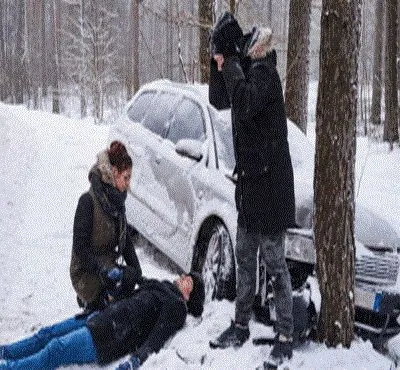Workplace accidents are common at any time of the year, underscoring the need for a safe work environment and culture. However, the winter season may pose unique hazards that may increase the likelihood of an accident that causes injuries. Employers should evaluate their workplaces for potential winter-related hazards and remedy any unsafe situations that they identify.
With proper safety preparation, employers and employees can work together to prevent winter-related injuries on job sites. Employers should always take whatever measures they can to mitigate the risks of employee injuries, such as a head injury or spinal cord damage. Employers should follow these two steps to determine the potential risks that their employees may encounter:
- Monitor the work environment regularly for new hazards that may arise.
- Ensure that all employees have the necessary safety tools or materials that they need to protect themselves on the job.
When seeking justice for personal injuries, hiring an experienced personal injury attorney is paramount—someone skilled in navigating complex legal processes, protecting your rights, and securing rightful compensation.
Winter Workplace Hazards

Here are some precautions that people can take to minimize the risks of winter-related accidents and injuries.
- Dress warmly on cold days.
- Wear skidproof shoes or boots if you plan to walk on ice or other slippery surfaces.
- Check the weather forecast before venturing out and prepare accordingly.
- Prepare your vehicle for driving in winter conditions, such as with snow tires or chains.
- Be aware of low-light conditions.
The winter season may increase the risk of the following three injuries:
- Slip and fall injuries
Icy outdoor surfaces can lead to slip and fall accidents. Some of the most common injuries that people experience from a slip or a fall include broken bones, back pain, and joint damage. Here are some simple tips that can help you prevent slips and falls at the construction site during the winter:
- Keep walkways, stairways, and other work areas clear from debris.
- Remove hazards from walkways as soon as possible, such as water on floors and snow on sidewalks.
- Properly train your employees on workplace safety.
- Instruct your employees to avoid carrying heavy loads or pieces of equipment without proper precautions.
- Use proper warning signs and barricades to identify hazards to workers on the site.
- Driving and motor vehicle accidents
Employees who drive for business purposes often must travel despite inclement weather conditions. Extreme weather conditions can decrease a driver’s visibility and increase the risk of injuries. Icy roads can increase the risk of accidents and severe damages. Employees who are injured in a work-related car accident may have the right to file a personal injury claim against their employer under certain circumstances. This is why employers should create safety policies for traveling during poor weather conditions.
- Hypothermia and frostbite
Other serious conditions that may result from exposure to extreme cold include hypothermia and frostbite. Both of these conditions can have long-lasting effects and may result in permanent damage to the skin. If a worker suspects that they have one of these conditions, they should seek immediate medical attention as a precaution.
Here are some of the common signs and symptoms that may mean you need to see a medical professional:
Frostbite:
- Icy skin
- Numbness and paleness of the skin
- Blisters or swelling
- Joint or muscle stiffness
Hypothermia:
- Shivering or shaking
- Absence of coordination
- Drowsiness or confusion
- Slurred speech
Take protective measures to prevent winter accidents.
Here are some of the protective measures that employers can take to prevent winter workplace accidents:
- Winter safety gear for workers
Winter safety gear for workers can play an important role and may help to minimize the risk of injuries. Cold temperatures cannot be avoided during winter. However, protective clothing that is appropriate for winter weather can protect workers against the cold:
- Clothing:Layering provides optimal insulation, and one should wear three or four layers of clothing in the coldest conditions.
- Head coverings:Most body heat leaves through the head, so it is important to wear a hat or other head covering to stay warm in cold weather.
- Gloves:Wearing protective gloves can keep your hands warm and minimize the risk of cold-related ailments, such as frostbite.
- Footwear:Workers should wear safety boots and footwear that is appropriate for winter weather conditions.
- Worker visibility:Fog and extreme snow can limit visibility. This is why employers should invest in high-visibility clothing and reflective gear for their employees. Wearing high-visibility clothing can reduce the risks of injuries and protect your workers.
- Train employees
Employers should be familiar with winter hazards. You should provide training to your employees and encourage them to practice safety precautions. You can support your safety trainings with:
- E-mail or text reminders of safety tips.
- Winter safety posters in common areas or break rooms.
- Winter safety training tips within company newsletters.
- Informal workshops for employees.
If you have suffered an injury in the workplace resulting from winter weather conditions, you may be able to file a personal injury claim for pain and suffering, lost wages, and future loss of earnings.
- Implement a safety assessment plan
Accidents are unpredictable and cannot always be prevented. Therefore, employers should carefully examine the risks in the workplace and formulate a risk management plan:
- Identify the potential risks.
- Figure out who may be at risk.
- Develop techniques for controlling and reducing hazardous conditions.
- Train your managers and implement safety prevention strategies.
- Maintain tools and heavy equipment
Ensure that all equipment is properly maintained and serviced.
Even after putting all required preventive measures into place, accidents may still occur at a job site. Following an accident, a worker can consult a Philadelphia work injury lawyer to learn about their legal options and file a claim.
